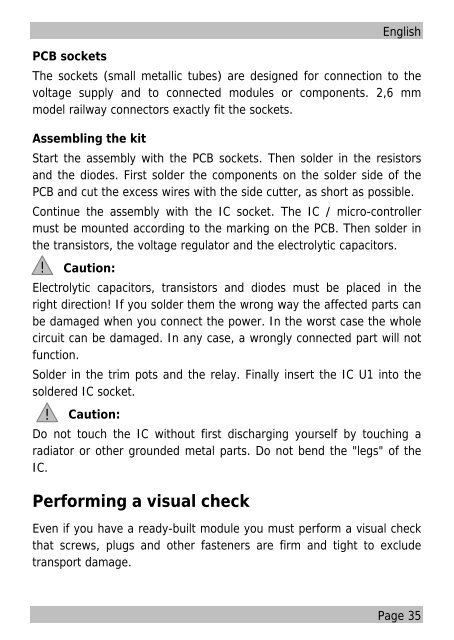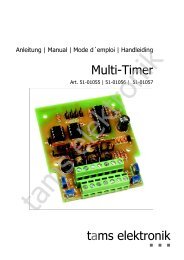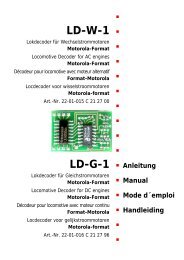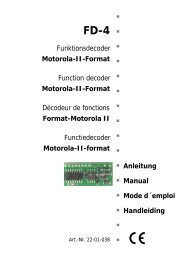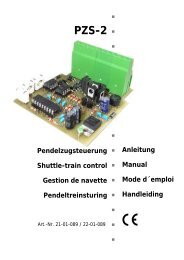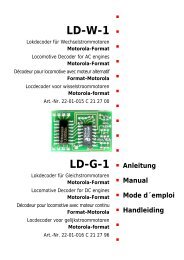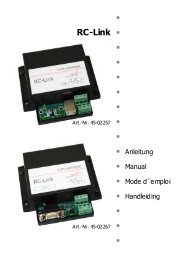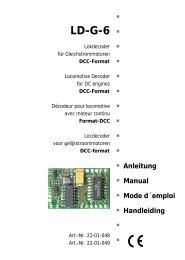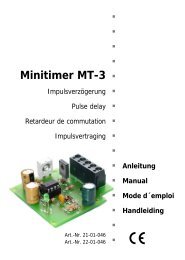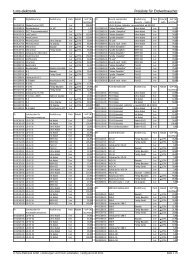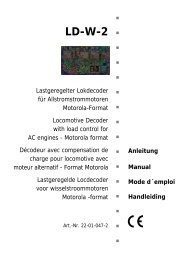You also want an ePaper? Increase the reach of your titles
YUMPU automatically turns print PDFs into web optimized ePapers that Google loves.
PCB sockets<br />
!<br />
English<br />
The sockets (small metallic tubes) are designed for connection to the<br />
voltage supply and to connected modules or components. 2,6 mm<br />
model railway connectors exactly fit the sockets.<br />
Assembling the kit<br />
Start the assembly with the PCB sockets. Then solder in the resistors<br />
and the diodes. First solder the components on the solder side of the<br />
PCB and cut the excess wires with the side cutter, as short as possible.<br />
Continue the assembly with the IC socket. The IC / micro-controller<br />
must be mounted according to the marking on the PCB. Then solder in<br />
the transistors, the voltage regulator and the electrolytic capacitors.<br />
Caution:<br />
Electrolytic capacitors, transistors and diodes must be placed in the<br />
right direction! If you solder them the wrong way the affected parts can<br />
be damaged when you connect the power. In the worst case the whole<br />
circuit can be damaged. In any case, a wrongly connected part will not<br />
function.<br />
Solder in the trim pots and the relay. Finally insert the IC U1 into the<br />
soldered IC socket.<br />
! Caution:<br />
Do not touch the IC without first discharging yourself by touching a<br />
radiator or other grounded metal parts. Do not bend the "legs" of the<br />
IC.<br />
Performing a visual check<br />
Even if you have a ready-built module you must perform a visual check<br />
that screws, plugs and other fasteners are firm and tight to exclude<br />
transport damage.<br />
Page 35


